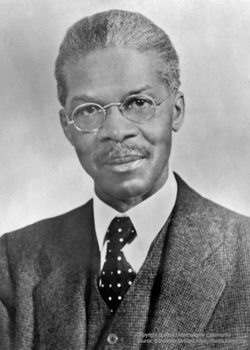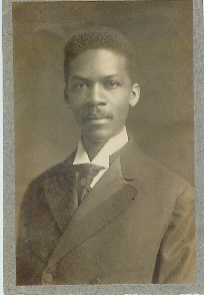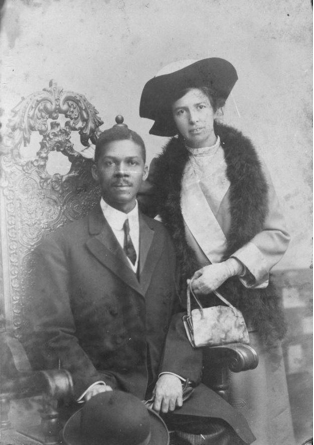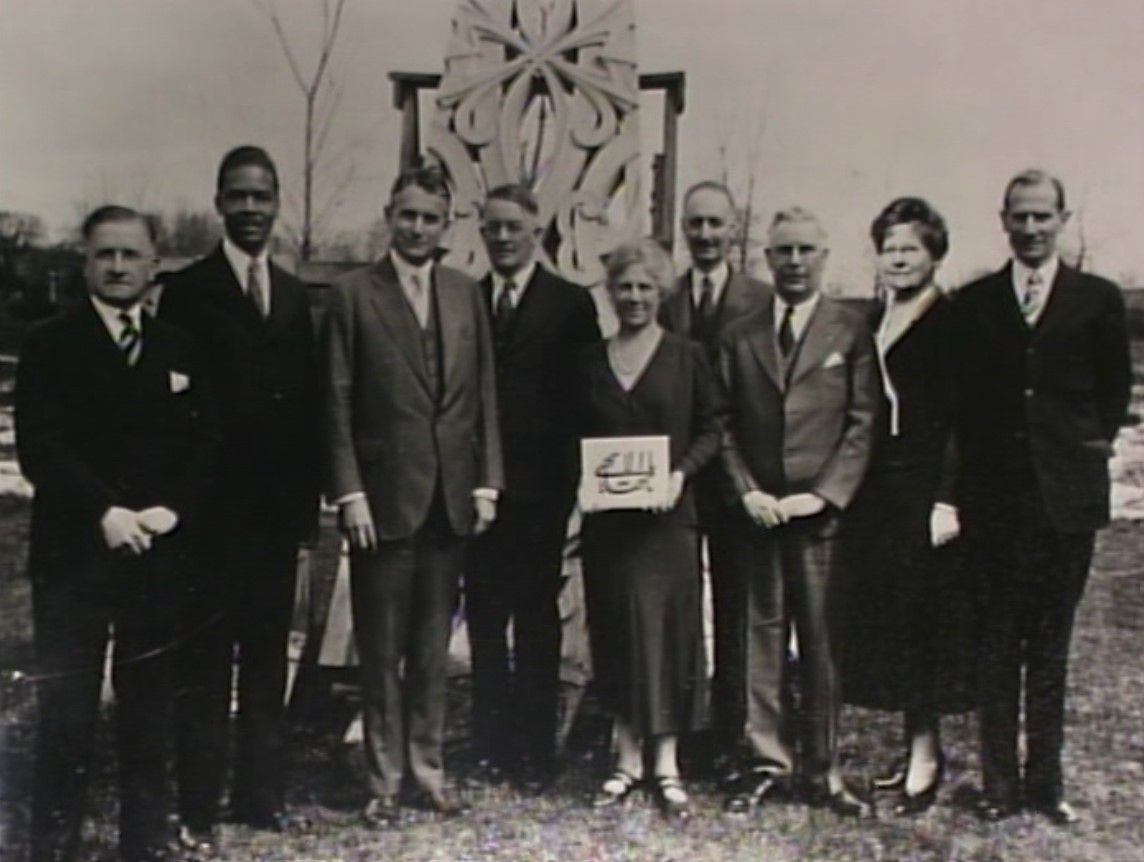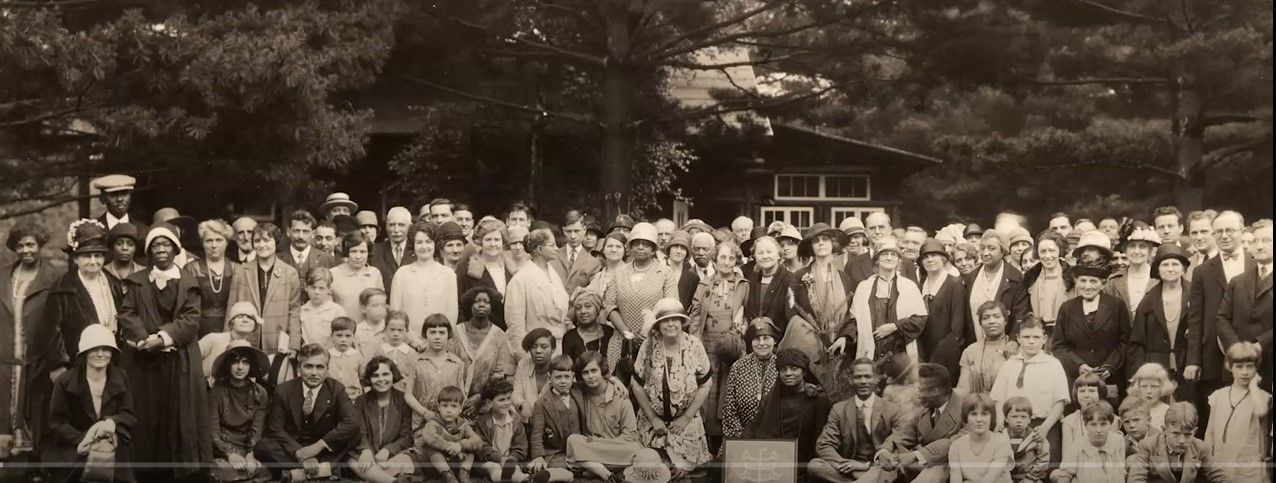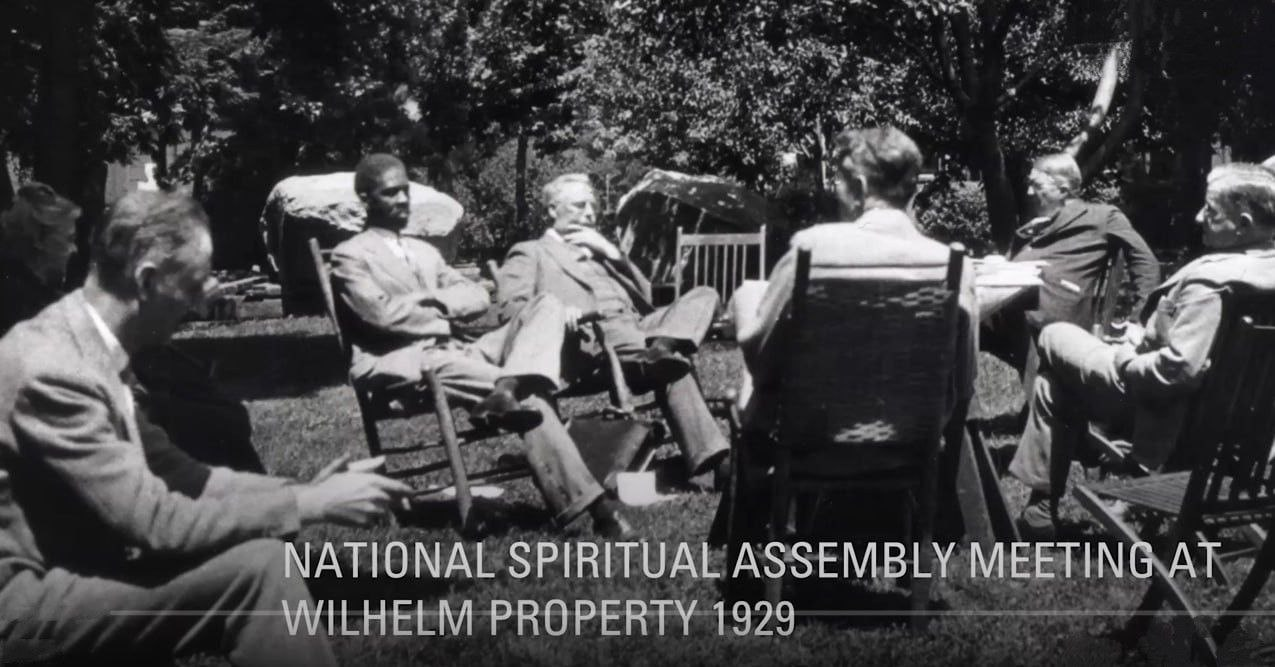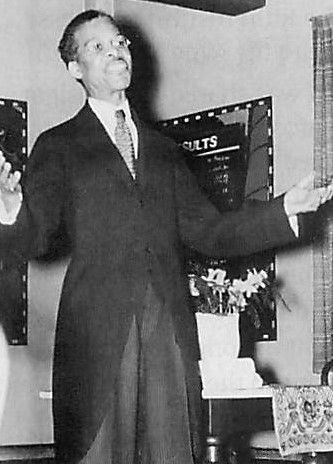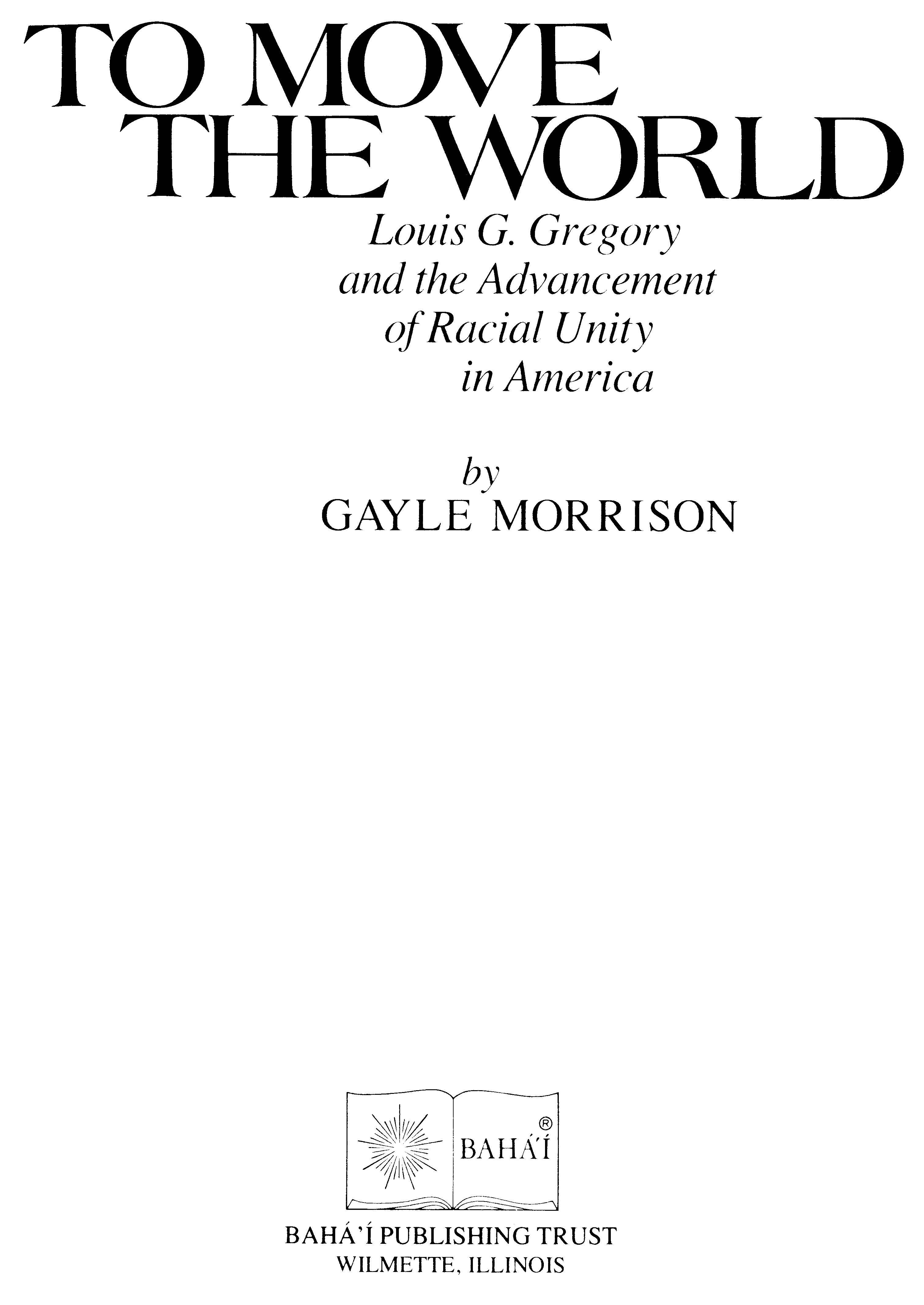He was posthumously appointed a Hand of the Cause by Shoghi Effendi.
Louis George Gregory was a prominent member of the Bahá'í Faith posthumously appointed a Hand of the Cause, the highest appointed position in the Bahá'í Faith, by Shoghi Effendi.
He was born on June 6, 1874 to African-American parents liberated during the Civil War whose number included his future stepfather 1st Sgt. George Gregory. His mother was Mary Elizabeth whose mother, Mary, was African and whose father was an slave owner named George Washington Dargan of the Rough Fork plantation in Darlington, South Carolina. When Gregory was four years old, his father, Ebaneezer George died, and his mother remarried to George Gregory. At this point Louis George Gregory took the name of his step-father.
During his elementary schooling, Gregory attended the first public school that was open to both African Americans and whites in Charleston, South Carolina. He then attended the Avery Institute, a private secondary school in Charleston, and Fisk University in Nashville, Tennessee where he completed his Bachelor's Degree. He continued on to Howard University in Washington D.C., one of the few universities to accept black graduate students, to study law and received his LL.B degree in March 1902. He was admitted to the bar, and along with another young lawyer, James A. Cobb, opened a law office in Washington D.C. The partnership ended in 1906, after Gregory started to work in the United States Department of the Treasury.
At the Treasury, Gregory met Thomas H. Gibbs, with whom he formed a close relationship. Gibbs, while not being a Bahá'í himself, shared information about the religion to Gregory, and Gregory attended a Bahá'í lecture by Lua Getsinger in 1907. In that meeting he met Pauline Hannen and her husband who invited him to many other meetings throughout the next couple years. When the Hannens received permission in 1909 to visit 'Abdu'l-Bahá in Syrian Palestine after he was freed from the Ottoman Empire, Gregory returned to law, establishing his practice in Washington D.C. When the Hannens returned, Gregory once again started attending Bahá'í meetings and on July 23, 1909 wrote to the Hannens that he was an adherent of the Bahá'í Faith:
In 1910, he travelled to Richmond, Virginia, Durham, North Carolina, Charleston, South Carolina and Macon, Georgia where he taught about the Bahá'í Faith. He also participated in the early Bahá'í administration. In February 1911 he was elected to the Washington's Working Committee of the Bahá'í Assembly, the first African-American to serve on that position.
On March 25, 1911, at the behest of 'Abdu'l-Bahá, Gregory sailed from New York through Europe to Egypt and Palestine to go on pilgrimage. In Palestine, Gregory met with 'Abdu'l-Bahá and Shoghi Effendi and visited the Shrine of Bahá'u'lláh and the Shrine of the Báb. During this time, 'Abdu'l-Bahá also started encouraging Gregory and Louisa Mathew, a white Englishwoman who was also a pilgrim, to get to know each other; on September 27, 1912, Gregory and Mathew married becoming the first Bahá'í interracial couple.
During the same year, on April 30, 1912, he was the only African-American elected to the first national administrative body of the Bahá'í Faith in America. Later, he was also the first African-American to be elected to the National Spiritual Assembly of the United States and Canada, a body which he would be elected to in 1922, 1924, 1927, 1932, 1934 and 1946.
Gregory died aged seventy-seven on July 30, 1951. He is buried at the Green Acre Bahá'í school in Eliot, Maine. On his death, Shoghi Effendi cabled to the American Bahá'í community:
"Profoundly deplore grievous loss of dearly beloved, nobleminded, golden hearted Louis Gregory, pride and example to the Negro adherents of the Faith ... Rising Bahá'í generation in African continent will glory in his memory and emulate his example."
He was posthumously appointed a Hand of the Cause by Shoghi Effendi.
Wikipedia
Louis Gregory's Grandfather, George Washington Dargan, is buried as Judge G.W. Dargan in Darlington, South Carolina, Find a Grave #52137585
Louis Gregory's Step-father, George Gregory is buried in Charleston Find a Grave #84657943
He was posthumously appointed a Hand of the Cause by Shoghi Effendi.
Louis George Gregory was a prominent member of the Bahá'í Faith posthumously appointed a Hand of the Cause, the highest appointed position in the Bahá'í Faith, by Shoghi Effendi.
He was born on June 6, 1874 to African-American parents liberated during the Civil War whose number included his future stepfather 1st Sgt. George Gregory. His mother was Mary Elizabeth whose mother, Mary, was African and whose father was an slave owner named George Washington Dargan of the Rough Fork plantation in Darlington, South Carolina. When Gregory was four years old, his father, Ebaneezer George died, and his mother remarried to George Gregory. At this point Louis George Gregory took the name of his step-father.
During his elementary schooling, Gregory attended the first public school that was open to both African Americans and whites in Charleston, South Carolina. He then attended the Avery Institute, a private secondary school in Charleston, and Fisk University in Nashville, Tennessee where he completed his Bachelor's Degree. He continued on to Howard University in Washington D.C., one of the few universities to accept black graduate students, to study law and received his LL.B degree in March 1902. He was admitted to the bar, and along with another young lawyer, James A. Cobb, opened a law office in Washington D.C. The partnership ended in 1906, after Gregory started to work in the United States Department of the Treasury.
At the Treasury, Gregory met Thomas H. Gibbs, with whom he formed a close relationship. Gibbs, while not being a Bahá'í himself, shared information about the religion to Gregory, and Gregory attended a Bahá'í lecture by Lua Getsinger in 1907. In that meeting he met Pauline Hannen and her husband who invited him to many other meetings throughout the next couple years. When the Hannens received permission in 1909 to visit 'Abdu'l-Bahá in Syrian Palestine after he was freed from the Ottoman Empire, Gregory returned to law, establishing his practice in Washington D.C. When the Hannens returned, Gregory once again started attending Bahá'í meetings and on July 23, 1909 wrote to the Hannens that he was an adherent of the Bahá'í Faith:
In 1910, he travelled to Richmond, Virginia, Durham, North Carolina, Charleston, South Carolina and Macon, Georgia where he taught about the Bahá'í Faith. He also participated in the early Bahá'í administration. In February 1911 he was elected to the Washington's Working Committee of the Bahá'í Assembly, the first African-American to serve on that position.
On March 25, 1911, at the behest of 'Abdu'l-Bahá, Gregory sailed from New York through Europe to Egypt and Palestine to go on pilgrimage. In Palestine, Gregory met with 'Abdu'l-Bahá and Shoghi Effendi and visited the Shrine of Bahá'u'lláh and the Shrine of the Báb. During this time, 'Abdu'l-Bahá also started encouraging Gregory and Louisa Mathew, a white Englishwoman who was also a pilgrim, to get to know each other; on September 27, 1912, Gregory and Mathew married becoming the first Bahá'í interracial couple.
During the same year, on April 30, 1912, he was the only African-American elected to the first national administrative body of the Bahá'í Faith in America. Later, he was also the first African-American to be elected to the National Spiritual Assembly of the United States and Canada, a body which he would be elected to in 1922, 1924, 1927, 1932, 1934 and 1946.
Gregory died aged seventy-seven on July 30, 1951. He is buried at the Green Acre Bahá'í school in Eliot, Maine. On his death, Shoghi Effendi cabled to the American Bahá'í community:
"Profoundly deplore grievous loss of dearly beloved, nobleminded, golden hearted Louis Gregory, pride and example to the Negro adherents of the Faith ... Rising Bahá'í generation in African continent will glory in his memory and emulate his example."
He was posthumously appointed a Hand of the Cause by Shoghi Effendi.
Wikipedia
Louis Gregory's Grandfather, George Washington Dargan, is buried as Judge G.W. Dargan in Darlington, South Carolina, Find a Grave #52137585
Louis Gregory's Step-father, George Gregory is buried in Charleston Find a Grave #84657943
Inscription
Loved Admired and Trusted by Abdu'l-Baha (and) Shoghi Effendi
